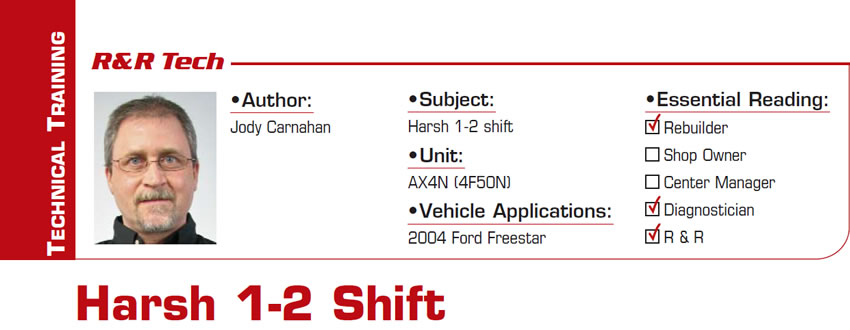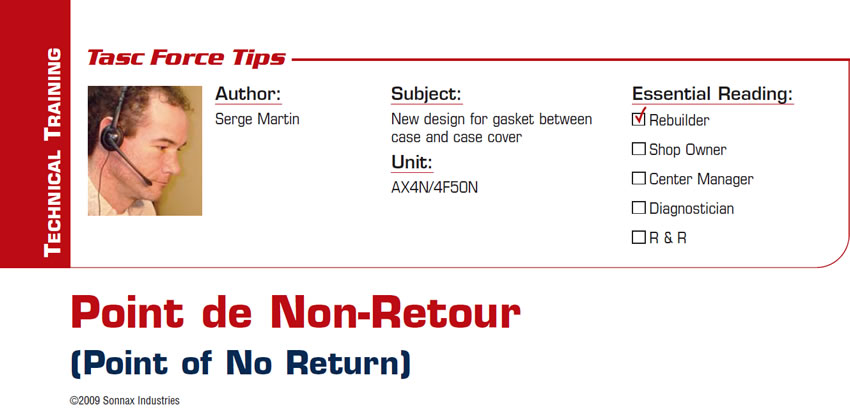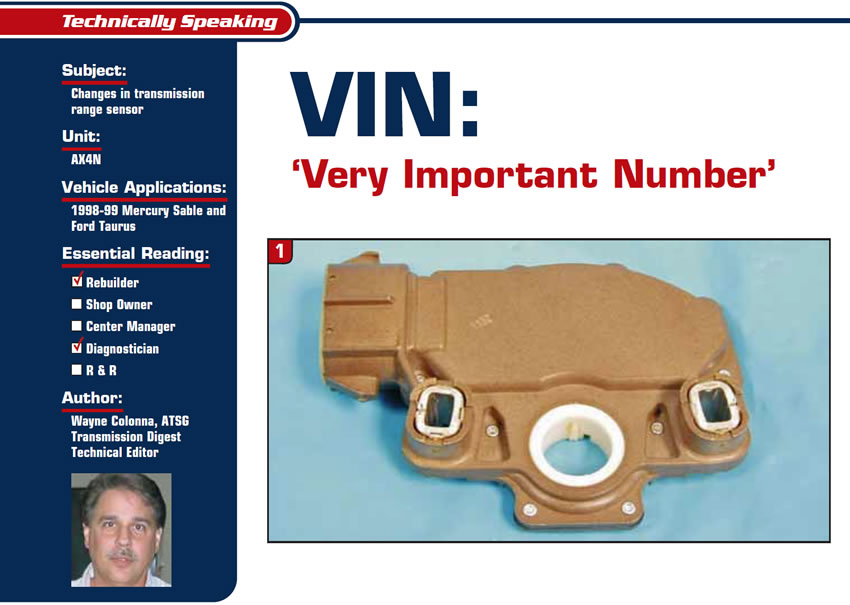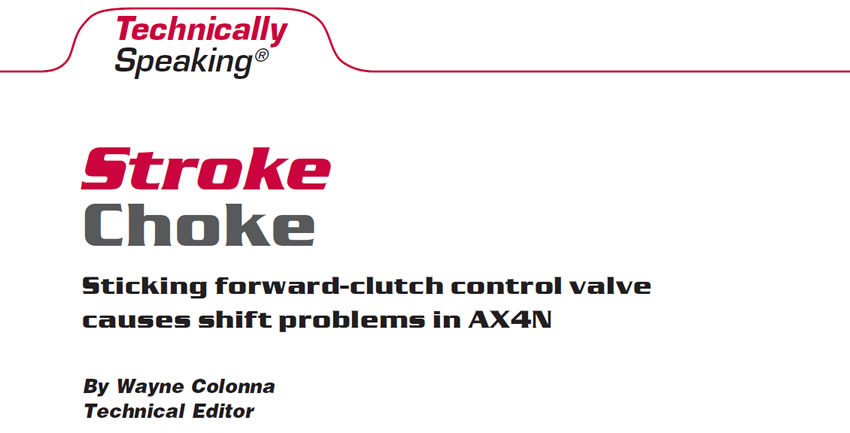Harsh 1-2 Shift
I received a call from one of our wholesale customers, a shop that does general-repair and transmission work on occasion. He was looking for help on a 2004 Ford Freestar that he could not get to leave his shop. In fact, the vehicle had been to several other shops. He told me that another shop had worked on the transmission recently and that it was now back in his shop.

Point de Non-Retour (Point of No Return)
2004 and later AX4N/4F50N units have a new design for the gasket between the case and case cover. Changes in the area of the neutral/reverse accumulator (Figure 1) required a small change in the opening for the accumulator. The 1.490-inch-diameter opening used on 2000-2003 units was increased to 1.810 inches in 2004.

VIN: ‘Very Important Number’
The acronym VIN is known to mean “vehicle identification number” but it also should be known as a “very important number.” Here is a good example of why that’s so.

Stroke Choke
The forward-clutch control valve in the AX4N valve body (see Figure 1) plays a large role in the apply and release of the forward clutch (see Figure 2). The valve must be stroked or opened to allow pressure into the forward-clutch circuit to the shift valves and closed or unstroked to block pressure from the circuit.

AX4S or AX4N?
Their turbine-speed sensors look similar but won’t interchange.
At first glance you might think the AX4S and AX4N turbine-speed sensors are the same. However, a closer look will show you that the AX4S sensor is a little longer – which means you easily could install the wrong sensor in a unit by mistake.

No Vehicle-Speed Sensor?
A 1995 Lincoln Continental with an AX4N transmission comes into the shop with a gear-ratio-error code. As you are going through the diagnostic routine, you have pretty much determined that the unit needs to come out. But before you remove it, you decide to check for a glitch in the vehicle-speed sensor (VSS).

AX4S/AX4N – No Go/No Charge
With their fingers crossed and the cooler-return line still in the bucket, they start the car up. The cooler line makes a little pop, a spit, some foamy fluid then, lo and behold, a nice clean steady stream of fluid comes out of the line. Mission accomplished. The converter has charge. After the cooler line is re-connected, the trans is topped off, road tested and everything works perfectly. End of story you say. Not quite yet. The question that remains is what did we do to correct whatever was wrong with the unit? We did not find anything to point a finger at as to the cause of the problem.

